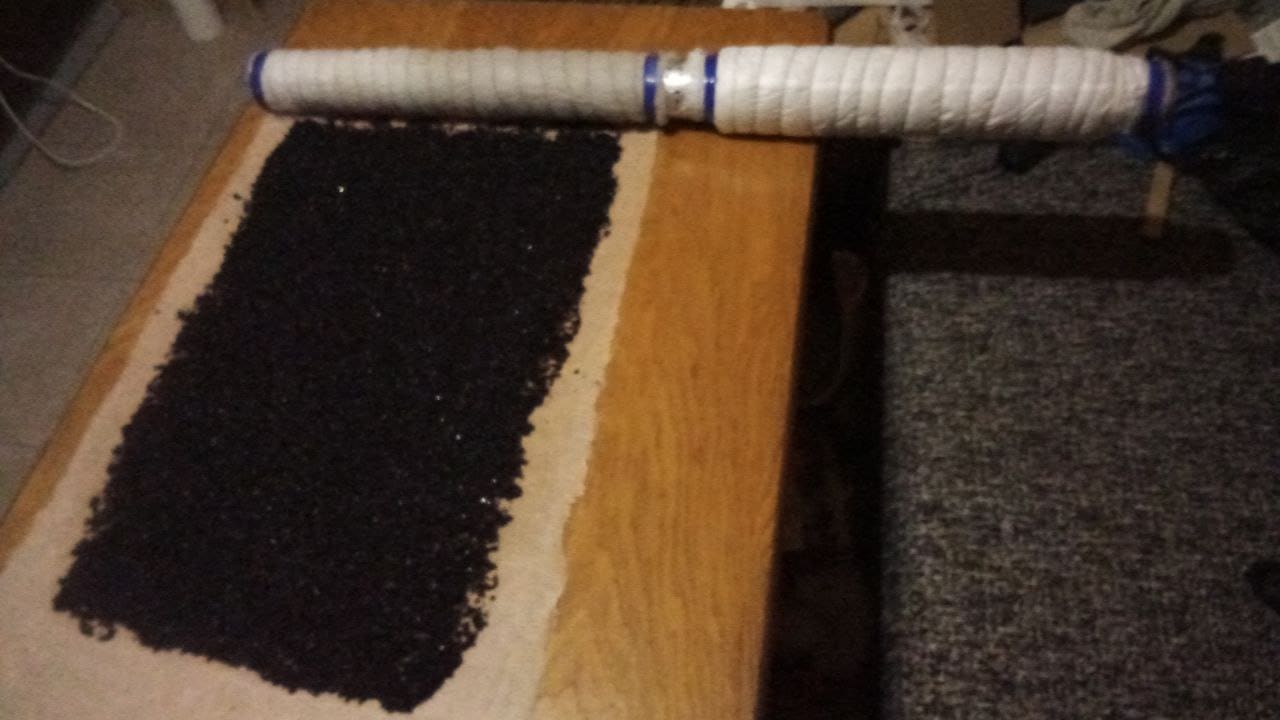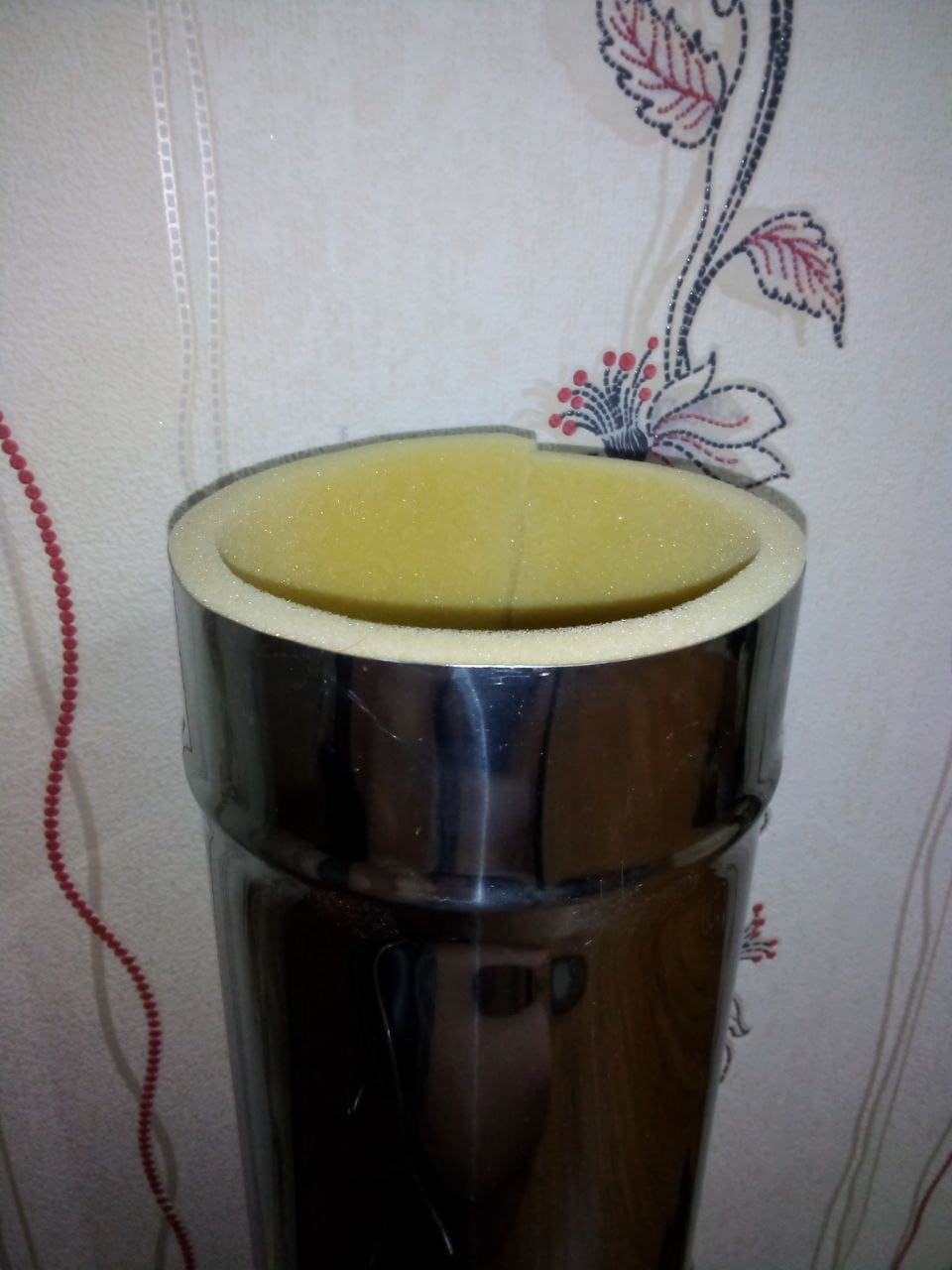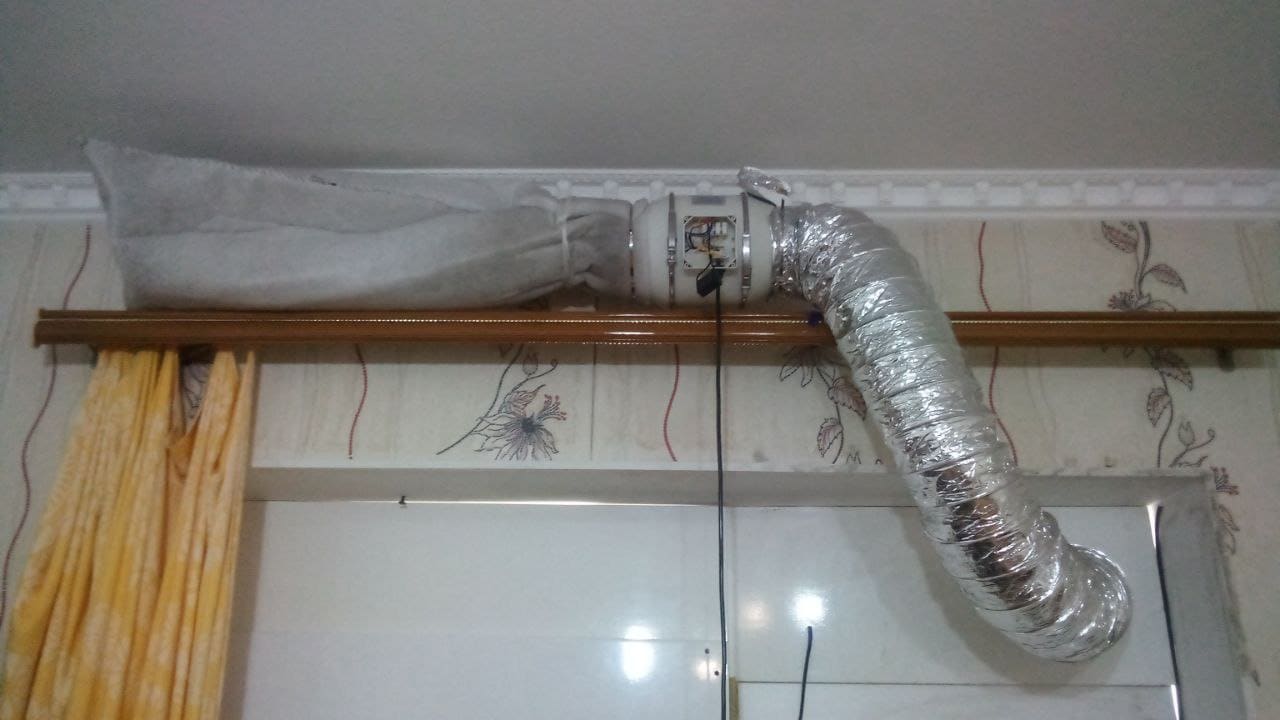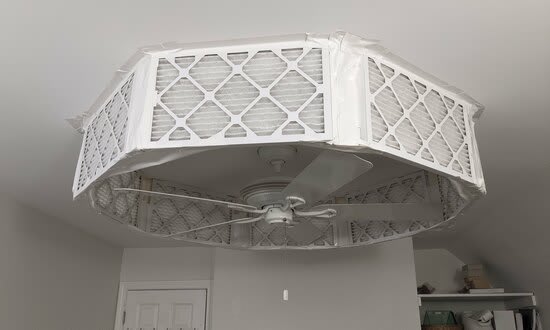Better Air Purifiers
15Thomas Kwa
6denkenberger
6DirectedEvolution
3Trevor Hill-Hand
3Sodium
3Yaroslav Granowski
9jefftk
6dynomight
6CronoDAS
3jefftk
4CronoDAS
2juliawise
2Yaroslav Granowski
2jefftk
1Yaroslav Granowski
3jefftk
1Yaroslav Granowski
1athom
1samgalam
1Mis-Understandings
3jefftk
New Comment
I'd guess that a cheaper, wall-mounted version of CleanAirKits/Airfanta would be a better product. It's just a box with fans and slots for filters, the installation labor is significantly lower, you get better aesthetics, and not everyone has 52 inch ceiling fans at a standardized mounting length already so the market is potentially much larger with a standalone device.
The problem with the ceiling fan is that it's not designed for static pressure, so its effectiveness at moving air through the filter will depend on contingent factors like the blade area ratio and distance from the ceiling (which determines how much filter area you can fit). 180 CFM @ 33 dB is better than the Coway but only matches a single box with ~7 PC fans on medium; you can do better with a custom designed ceiling fan but at that point the fan needs to be part of the product.
That's a good point about the space taken up. Even outside of expensive cities, construction cost is ~$150/ft2 ($1500/m2), so not even counting lost space around the unit, the cost of the floor space is likely higher than the cost of the unit if put on the floor. You got impressive results with the ceiling fan. We are working on a project to estimate the scale up speed of in-room air filtration in an engineered pandemic. It's focused on vital industries, but there are often ceiling fans there. A big advantage of in-room filtration over masks is intelligibility, but noise can interfere with that as well (though at least you have the lip cues advantage).
Matthais Wandel feels like a super useful resource to include here:
- Photographing airborne dust (12 years old, but is about measuring airborne particles without fancy equipment): https://www.youtube.com/watch?v=OmehjfmoxPQ
- 'dust' videos on his channel: https://www.youtube.com/@matthiaswandel/search?query=dust
He's usually more focused on woodworking dust, but does end up talking a lot about the different types and sources of "stuff in the air" and what different measurement tools are looking for.
It feels pretty inefficient to me. Filters are too big a resistance for air flow in this case and it will rather swirl around fan blades.
Why not attach filters right to the fan blades or even instead of them?
I built and tested a prototype and it works well: https://www.jefftk.com/p/ceiling-air-purifier
I just want to say: I love the idea of fan blades that are themselves filters. One of the central challenges with air purifiers, is that a lot of energy is "wasted" trying to push air through filter materials. With fan blades, I think essentially all of the energy would be used either for filtering or for pushing air, in a sense this purifier would be 100% efficient? Also I worry (only a little bit) that Jeff's ceiling-fan idea might increase the load on the motor, and this would seem to totally eliminate that concern.
Though in practice, this seems hard. I guess you'd want some rigid fan blades with "slots" you could put commodity filters in a standardized shape? Not sure there are any cheap standard filters that would make this easy.
There's a way to test this. If you put a piece of paper next to the HVAC filters around the fan, does it stick to them or fall down?
If you don't care much about compactness, you can easily make a DIY muffler: A long pipe with a sound absorber layer. Sound wave goes along the pipe. Its outer part gets absorbed and due to the diffraction inner part spreads. The impedance is exponential, or in decibells is proportional with respect to the length of the pipe.
Why not? If it has a good fun, the most of the noise will be airborn, and so you only need to attach mufflers to inlet and outlet. But perhaps there can be difficulties if you didn't want to disasseble it.
I did for myself DIY purifier and used extremely noisy high-pitched 40mm fun for server units at 18000rpm. High frequencies even better get absorbed by the muffler. And due to the small size, these fans can produce high pressure at slow troughput. So can save on filter materials. Although didn't finish it since activated charcoal I bought was of low quality. Using it in the kitchen only. If only I could insert pictures in the comment.
Problems I'd expect:
- The filter moves a lot of air, so you need quite long pipes.
- You need pipes on both the input and output
- Some of the noise will be vibration of the purifier body, so you might need to enclose that too
Pictures on lesswrong do work, including in comments. Here's one I inserted by using the WYSIWYG editor ("LessWrong Docs") and pasting an image:

- The filter moves a lot of air, so you need quite long pipes.
Speed matter only in the need for bigger pipe diameter. Impedance depend on the ratio of length to diameter.
- You need pipes on both the input and output
Indeed.
- Some of the noise will be vibration of the purifier body, so you might need to enclose that too
Depend on the quality of the fun bearing. Vibration of the air does transmit to the body and to the pipes, but very littlle. And if you can make an extra casing around, if you need.

This is how I was doing DIY purifier (first version of it) with a fun in the middle of pierced steel 60mm pipe. Wet charcoal on gauze wound around the pipe. Inside the pipe was a layer of reticulated polyurethane foam acting both as a filter and sound absorber. The thing afterwards put into 150mm pipe with a layer of polyurethane foam.

And that was quite quiet. The problem was in the quality of the charcoal giving a smell. So I reassembled it for better throughput and use in the kitchen without muffling.
And for the room I use this ugly and loud, but powerfull setup for short periods of cleaner air outside:

There might be a better chance of this becoming widely used if the design is pitched to IKEA (or similar), over being developed in a new, dedicated company
I love the ceiling fan idea!
I have been appreciating housefresh.com as a better place to find air purifier reviews than what makes it on Wirecutter's list.
Thoughts about HEPA is as a standard. A lower percentage removed can happen in two ways. One is probabilistic, where the same particle might or might not get trapped. Managing probabilistic capture, total circulation and fan stats (airflow vs static pressure) is probably a good idea. Introducing determinsitic non-captures (where there are a a class of particles not captured), can be a problem, as those will not be affected by the purifier. But that is engineering that requires only dilligence.
Another way of putting it is that it makes more sense to use higher airflow, lower static pressure fans, and the filters should work with that.
I agree that the correct measure is particulates where people breathe, not simply exhaust particulates.
Introducing deterministic non-captures (where there are a a class of particles not captured), can be a problem, as those will not be affected by the purifier.
With something like a MERV 14 HVAC filter there aren't any particle sizes that it deterministically doesn't capture, though it does have lower efficiency at some sizes (75% at worst performing size).
